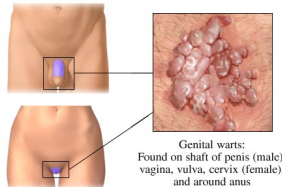Traditional cancer treatments have only focused on the cancer cells, leaving the cancer stem cells behind. Chemotherapy will kill cancer cells, but cancer stem cells may somehow “hide” during chemo or radiation, then later they morph into actively growing cancer cells and move to other parts of the body. If even one cancer stem cell survives, you’re going to have an entire tumor reconstituted, and in a more aggressive form. So in addition to killing cancer cells, cancer treatments must target cancer stem cells to eradicate the disease before they get a chance to initiate new patterns of growth and cause even more problems. If you kill the cancer stem cells, then you eradicate (cure) the cancer.
Telomerase is an enzyme in cancer stem cells that keeps these cells immortal …
Viruses are found wherever there is life and have probably existed since living cells first evolved. Most virus infections eventually result in the death of the host cell. Viral infections provoke an immune response that usually eliminates the infecting virus. However, some viruses including those causing AIDS, viral hepatitis, genital warts and cervical cancer evade these immune responses and result in chronic infections. Antibiotics have no effect on viruses. Viral populations do not grow through cell division, because they are acellular. Instead, they use the machinery and metabolism of a host cell to produce multiple copies of themselves, and they assemble in the cell.
Some viruses cause no apparent changes to the infected cell. Cells in which the virus is latent and inactive show few signs of infection and often function …
 All warts are caused by human papilloma virus (HPV) infections. HPV has over 100 different strains. Genital warts (condyloma acuminata) are the most common sexually transmitted disease and affect millions of people throughout the world. Genital warts appear as flesh-colored, round bumps of varying sizes. They can be smooth and flat or cauliflower-like with a small stalk. They can be seen on the labia, vagina, penis, scrotum, anus, skin around the anus, and uret
All warts are caused by human papilloma virus (HPV) infections. HPV has over 100 different strains. Genital warts (condyloma acuminata) are the most common sexually transmitted disease and affect millions of people throughout the world. Genital warts appear as flesh-colored, round bumps of varying sizes. They can be smooth and flat or cauliflower-like with a small stalk. They can be seen on the labia, vagina, penis, scrotum, anus, skin around the anus, and uret
HPV subtypes number 6 and 11 cause 97% of genital warts and are considered low risk because they very rarely will cause genital or anal cancer. On the other hand, HPV subtypes 16 and 18, for example, are considered high risk because, although they rarely cause genital warts, they can lead …
The primary features of cancer are maintained via intrinsically modified metabolic activity, which is characterized by enhanced nutrient supply, energy production, and biosynthetic activity to synthesize a variety of macromolecular components during each passage through the cell cycle.
Glutamine is the most abundant amino acid (building block of protein) in the body. Its main storage site is in the musculature; where about 60% of all the unbound amino acids are glutamine (glutamine makes up a smaller percentage of muscle protein, the main bound form). Glutamine has been called a “conditionally essential” nutrient, because it is non-essential in normal situations (meaning that the body can normally synthesize what it needs; not required in the diet), but in severe illness or injury becomes insufficient (there is then a need for supplementation from the …
It is only recently that a clear link has been established between stem cells and cancer in a variety of cancer types since cancers often arise from the transformation of normal stem cells. In solid organs, cancer stem cells create all the cells in the tumors. But in blood cancers they create havoc in the circulatory and immune systems by spawning large numbers of immature or abnormal cells (usually white blood cells).
For example, in leukemia, these abnormal cells pool in the bone marrow and displace healthy cells, attack or overwhelm the immune system, or cause a platelet or red blood cell deficiency leading to poor wound healing or anemia. Because a stem cell always retains a “copy” of itself in the process of cell division, the leukemia stem cell has …
There are two main categories of lung cancer.
1. Non–small cell lung carcinoma (NSCLC): About 85 to 87% of lung cancers are in this category. This cancer grows more slowly than small cell lung carcinoma. Nevertheless, by the time about 40% of people are diagnosed, the cancer has spread to other parts of the body outside of the chest.
There are 3 sub-types of NSCLC. The cells in these sub-types differ in size, shape, and chemical make-up.
Squamous cell carcinoma: About 25% to 30% of all lung cancers are this kind. They are linked to smoking and tend to be found in the middle of the lungs, near a bronchus.
Adenocarcinoma: This type accounts for about 40% of lung cancers. It is usually found in the outer part of the lung.
Large-cell (undifferentiated) carcinoma: …
The war on cancer, fought for four decades marked by failure and frustration. We’ve learned enormous amounts about the disease, but it hasn’t translated into therapy. This is especially true in cancer, where old and new targeted therapies continue to fail and the most recent ones do not offer much improvement on clinical outcome parameters. New drugs are continuously designed and tried, it seems inevitable that genetic and signal protein targets pose too broad flexibility and variability, often changing target characteristics and thus escape treatments turning “magic bullets” into rather “wondering bullets”.
Metabolic modulation may be a viable therapeutic approach in the treatment of cancer and leukemia. Metabolic targeted therapies are aimed at control points of the metabolic network by targeting particular enzymes of major macromolecule synthesis pathways in cancer and …
 Parthenolide is the main extracts of sesquiterpene lactone isolated from medicinal herbs such as feverfew (Tanacetum parthenium). Sesquiterpene lactones (SLs) are plant-derived compounds often used in traditional medicine against inflammation and cancer. Sesquiterpene lactones (SLs) in clinical trials are artemisinin, thapsigargin and parthenolide and many of their synthetic derivatives. These drugs are selective toward tumor and cancer stem cells by targeting specific signaling pathways, which make them lead compounds in cancer clinical trials.
Parthenolide is the main extracts of sesquiterpene lactone isolated from medicinal herbs such as feverfew (Tanacetum parthenium). Sesquiterpene lactones (SLs) are plant-derived compounds often used in traditional medicine against inflammation and cancer. Sesquiterpene lactones (SLs) in clinical trials are artemisinin, thapsigargin and parthenolide and many of their synthetic derivatives. These drugs are selective toward tumor and cancer stem cells by targeting specific signaling pathways, which make them lead compounds in cancer clinical trials.
Parthenolide has been used conventionally to treat migraine and rheumatoid arthritis for centuries. Recently it has been reported that Parthenolide may induce inhibition of proliferation and apoptosis in various human cancer cells in vitro, such as colorectal cancer, pancreatic cancer, hepatoma, leukemia and cholangiocarcinoma.
In addition, Parthenolide can …
The epigenetic control of gene expression has been shown to play a critical role in cancer initiation, progression, and resistance. Epigenetic regulation is most commonly controlled by a number of chemical modifications that alter the way DNA is packed, which in turn makes those genes easier to turn on or off. This natural pattern of activation, which is influenced by fetal environment, stress, diet, exercise and toxic exposure, among other things, is unique to each person. The three main types of epigenetic changes occur during epigenetic remodeling:
DNA methylation can be mis-regulated during tumor formation, silencing tumor suppressor genes as well as other genes,
Histone modifications— including acetylation, Methylation, phosphorylation, ubiquitilation and sumoylation— are important in transcriptional regulation and many are stably maintained during cell division
Genomic imprinting is parent-of-origin-specific allele silencing, or …
Triggering of tumour cell apoptosis is the foundation of many cancer therapies. TRAIL (TNF-related apoptosis-inducing ligand) is a death pathway that, under the right circumstances, can induce cells to commit an orderly form of suicide called apoptosis. TRAIL (also known as Apo2L) is Type II transmembrane protein belonging to the Tumor Necrosis Factor (TNF) superfamily that is expressed on the surface of Natural Killer (NK) and T cells, macrophages and dendritic cells. As with other cytokines, the protein is synthesized in a pro-form with a signal sequence that is removed in the mature secreted protein.
Death receptors of TNF (the tumour necrosis factor) superfamily have been largely characterized, as have the signals that are generated when …